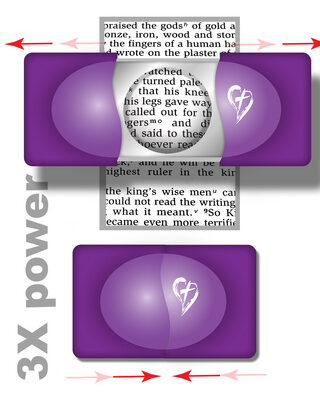
Ladrones Del Exito – (Spanish)
$14.99
“Es que el liderazgo y el exito no se construyen solo con carisma…Muchas veces, lo que destruye lo que construimos no son, necesariamente, los grandes, obvios y visibles enemigos, sino aquellos pequeos que no atendemos o eliminamos a tiempo”, escribe Adolfo Aguero Esgaib en su nuevo libro Ladrones del exito. De sus experiencias como empresario y pastor, el autor lanza una alerta contra los 10 “principios” que impiden a las personas alcanzar el exito que buscan. Hace un recorrido en cada uno, ayudando al lector a identificarlo dentro de si, explicando el efecto de cada uno: victimizacion, orgullo, ingratitud, trabajar solo, falta de vision, falta de caracter o caracter deformado, mediocridad, falta de empatia, irresponsabilidad y falta de integridad. Junto con esta concientizacion, encontramos las recomendaciones de manejo, soluciones y cambios para apresar a estos ladrones y capturar nuestro futuro.
“It is that leadership and success are not built only with charisma … Many times, what destroys what we build are not, necessarily, the big, obvious, and visible enemies, but those little ones that we do not attend or eliminate in time”, he writes Adolfo Aguero Esgaib in his new book Thieves of success. From his experiences as a businessman and pastor, the author warns against the 10 “principles” that prevent people from achieving the success they seek. He takes a tour of each one, helping the reader to identify it within himself, explaining the effect of each one: victimization, pride, ingratitude, working alone, lack of vision, lack of character or deformed character, mediocrity, lack of empathy, irresponsibility, and lack of integrity. Along with this awareness, we find the management recommendations, solutions, and changes to catch these thieves and capture our future.
in stock within 3-5 days of online purchase
SKU (ISBN): 9781641237376
ISBN10: 1641237376
Language: Spanish
Adolfo Esgaib
Binding: Trade Paper
Published: August 2021
Publisher: Whitaker House Publishers
Related products
-
Que Mueve Tu Escalera – (Spanish)
$15.99Add to cartWhat obstacles are blocking you?What is your biggest leadership challenge?If overcome successfully, what challenge is ready to springboard you toward your destiny?In What’s Shakin’ Your Ladder? Dr. Samuel Chand discusses fifteen challenges that are common to all leaders and teaches you how to successfully overcome them. Regardless of whether you are leading a new and developing organization or a Fortune 500 corporation, you will be confronted by the challenges of: FOCUS: Finding and maintaining what is importantCOMMUNICATION: Saying it in a way that everyone gets itDECISION MAKING: Understanding how we make decisions, so we can make them betterCHOOSING THE TEAM: Making critical decisions about who is on our teamCHANGE VS. TRANSITION: Intentionally planning transitions for smoother changeCONFLICT: Understanding the importance of health during conflictCONTROL VS. DELEGATION: Learning when to hang on and when to let goEXECUTION: Getting the job doneDr. Chand takes an in-depth look at each of these challenges (plus eight more) and provides practical advice on how to face and overcome the things that are blocking you from achieving your personal best.If you want to grow as a leader, this book is your guide
-
Secuencia Hacia El Exito – (Spanish)
$14.99Add to cartTodos llegamos a algun lugar en la vida debido a tres cosas: alguien nos observa, forma una opinion sobre nosotros y decide darnos una oportunidad… o no. Nosotros hacemos lo mismo con los demas. Las personas han jugado este papel esencial en nuestras vidas, y nosotros lo jugamos en la vida de quienes nos rodean, y no importa cuanta habilidad tengamos, podemos jugar aun mejor.
La secuencia se aplica en los negocios, la iglesia, los matrimonios, la paternidad y las amistades. A menudo evaluamos a otros en un abrir y cerrar de ojos. Percibimos instintivamente la expresion de la cara de alguien, el tono de voz o el lenguaje corporal que es consistente o diferente de sus palabras. Reaccionamos a nuestra observacion, pero rara vez nos detenemos a analizar antes de responder; simplemente sucede inmediatamente. Observamos y tenemos una opinion, y en base a lo que hemos determinado en ese segundo, le damos a la persona una oportunidad de relacionarse con nosotros, o cerramos la puerta y permanecemos vigilantes.
Secuencia del exito es un libro de liderazgo, pero no se limita a las empresas, presidentes, directores generales o pastores principales. Es para todos los que tienen una posicion de influencia en la vida de otra persona, y eso nos incluye a todos. En este libro, Sam Chand saca a la luz nuestras suposiciones subconscientes. Con mas perspicacia y confianza, tomaras mejores decisiones para avanzar a las personas que te rodean… o tal vez mostrarles la puerta. Estos principios tambien te ayudan a ser mas consciente de que las personas te estan observando y formando opiniones sobre ti, abriendo o cerrando puertas de oportunidad.
Every one of us gets anywhere in life due to three things: someone observes us, forms an opinion about us, and decides to give us an opportunity…or not. Likewise, we do the same with others. People have played this essential role in our lives, and we play it in the lives of those around us–and no matter how skilled we’ve become, we can play it even better.
This sequence applies in business, church, marriages, parenting, and friendships. We often assess others in the blink of an eye. We instinctively notice the look on someone’s face, their tone of voice, or their body language as consistent or different from the words being spoken. We react to our observation, but we seldom stop to analyze before we respond–it just happens. Immediately, we observe and form an opinion, and based on what we’ve determined in that split s
-
Culture Catalyst : Seven Strategies To Bring Positive Change To Your Organi
$24.99Add to cartCulture Catalyst: Seven Strategies to Bring Positive Change to Your Organization
“Culture–not vision or strategy–is the most powerful factor in any organization. It determines the receptivity of staff and volunteers to new ideas, unleashes or dampens creativity, builds or erodes enthusiasm, and creates a sense of pride or deep discouragement about working or being involved there. Ultimately, the culture of an organization–particularly in churches and nonprofit organizations, but also in any organization–shapes individual morale, teamwork, effectiveness, and outcomes.” -from Chapter One
Often, organizational leaders confuse culture with vision and strategy, but they are very different. Vision and strategy usually focus on products, services, and outcomes, but culture is about the people–an organization’s most valuable asset. Culture Catalyst: Seven Strategies to Bring Positive Change to Your Organization offers a practical resource for discovering the deficits in an existing organization’s culture, and includes the steps needed to assess, correct, and change culture from lackluster to vibrant and inspirational, so that it truly meets the needs of the organization.
Prominent leadership consultant Sam Chand describes the five easily identifiable categories of organizational culture (Inspiring, Accepting, Stagnant, Discouraging, and Toxic), and includes diagnostic methods that leaders can use to identify the particular strengths and needs of their organization’s culture. To help in this process, there is also a separate, free, online assessment tool (www.samchandculturesurvey.com).
Once an organization’s culture is clearly identified, leaders can put in place a strategy for applying the seven keys of CULTURE (Control, Understanding, Leadership, Trust, Unafraid, Responsive, and Execution) that will make their culture one that stimulates people to be and do their very best and ultimately reach their highest goals.
-
Inspira – (Spanish)
$16.00Add to cart“La cultura, no la vision o la estrategia, es el factor mas poderoso en cualquier organizacion. Ella determina la receptividad del personal y de los voluntarios a nuevas ideas, desata o inhibe la creatividad, construye o erosiona el entusiasmo, y crea un sentido de orgullo y profundo desaliento sobre trabajar o involucrarse. Finalmente, la cultura de una organizacion, particularmente en iglesias y organizaciones sin fines de lucro, pero tambien en cualquier organizacion, moldea la moral individual, el trabajo de equipo, la efectividad y los resultados.” — del capitulo uno
Con frecuencia, los lideres organizacionales confunden la cultura con la vision y la estrategia, pero son muy diferentes. La vision y la estrategia usualmente se enfocan en productos, servicios y resultados, pero la cultura es sobre las personas, el activo mas valioso de la organizacion. Inspira, Como crear una cultura organizacional poderosa lleva a descubrir los deficits en una culta organizacional e incluye los pasos necesarios para evaluar, corregir y cambiar la cultura organizacional deslucida a una vibrante e inspiracional, para que verdaderamente llene las necesidades de la organizacion. El prominente consultor de liderazgo Sam Chand describe las cinco categorias facilmente identificables de la cultura organizacional (Inspiradora, Aceptadora, Estancada, Desalentadora y Toxica), e incluye metodos diagnosticos que los lideres pueden usar para la identificar las fortalezas particulares y las necesidades de su cultura organizacional. Para ayudar en este proceso, tambien, hay una herramienta de evaluacion separada, gratuita, en linea (www.samchandculturesurvey.com). Cuando la cultura de la organizacion esta claramente identificada, los lideres pueden establecer una estrategia para aplicar las siete claves de la Cultura (control, Entendimiento, Liderazgo, Confianza, Sin temor, Responsiva y Ejecucion) que hara de su cultura una que estimule a las personas a ser y hacer lo mejor, y finalmente alcanzar sus metas mas altas.“Culture–not vision or strategy–is the most powerful factor in any organization. It determines the receptivity of staff and volunteers to new ideas, unleashes or dampens creativity, builds or erodes enthusiasm, and creates a sense of pride or deep discouragement about working or being involved there. Ultimately, the culture of an organization–particularly in churches and nonprofit organizations, but also in any organization–shapes individual morale, teamwork, e

 Marys Calico Hope
Marys Calico Hope
 Industrial No Weapon (Size 10 Ring)
Industrial No Weapon (Size 10 Ring)









Reviews
There are no reviews yet.